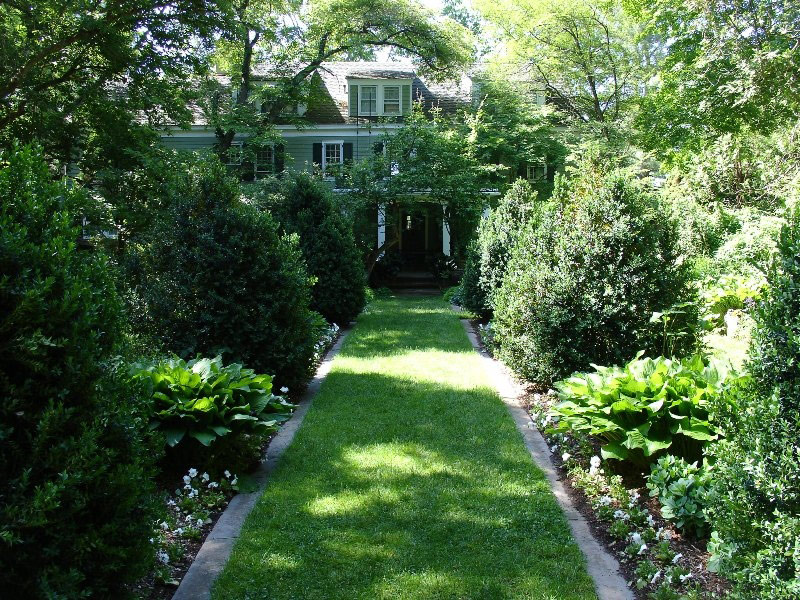Backyard Arboretum Creating A Collection Of Trees And Shrubs In Your Yard
If you are looking for a beautiful garden that is full of blooming flowers and plants, then you need to learn how to prune your flowering shrubs. Pruning is an essential skill for maintaining the health and beauty of your garden. It promotes healthy growth, removes dead wood, and enhances the overall appearance of your landscape. In this guide, we will teach you how to prune your flowering shrubs like a pro.
Before we get started, it is essential to know that all plants require different pruning techniques, timing, and intensity. Therefore, it is crucial to understand the flower-bearing habits of the shrub you’d like to prune. For example, some shrubs bloom on new growth, while others flower on old wood, and some shrubs even bloom on both. This knowledge is essential to ensure that you are pruning your flowering shrubs correctly.
The first step in pruning your flowering shrubs is to properly identify the plant. This identification is crucial because each shrub has unique pruning requirements. Once you know what kind of shrub you are dealing with, you can determine the appropriate pruning technique and the best time of year to do it.
The best time to prune flowering shrubs is during the dormant season, which is typically late winter or early spring, right before the buds start to grow. However, pruning a shrub while it is blooming is not recommended, as it can lead to cutting off the flowers and reduce the number of blossoms to come.
Now that you know when to prune your flowering shrubs let's get to the nitty-gritty of how to prune them. First, start by removing any dead, damaged or diseased branches to help keep your shrub healthy. This will also keep your shrub from wasting energy by trying to repair sickly branches.
Next, remove any crossing, rubbing, or branches that are growing inward. These branches can cause skin injuries that allow insects, fungi, and bacteria to enter the shrub, ultimately causing harm to the plant. If you're not sure which branches to prune, look at the overall structure of the plant and determine which ones are out of place.
How to
In addition to pruning dead, diseased, or crossing branches, you can also prune your flowering shrubs for proper plant formation. There are a few standard techniques you can use when pruning flowering shrubs, which will depend on the growth habit of the shrub. These techniques include:
- Thinning: Removing one branch at the bottom of the shrub to open up space within the plant
- Heading back: Shortening a branch by cutting it back to a bud or lateral branch to encourage new growth
- Rejuvenation: Removing older, woody stems to stimulate new growth
It is crucial to make clean cuts when pruning your shrubs, so they can heal correctly. Make sure you’re not leaving any ragged cuts or stubs, which can promote insect and disease activity. Use sharp pruning shears and make the cut at a slight angle, just above a healthy bud.
Tips & Tricks
Here are some additional tips and tricks that will make pruning your flowering shrubs a breeze.
- Invest in quality pruning shears that are sharp and that you can comfortably grip.
- Always clean and sharpen your pruning shears before and after use.
- Wear eye protection and gloves when pruning, especially if you are dealing with thorny or prickly plants.
- Don’t try to rush the pruning process, take your time, and be deliberate with each cut.
- Always prune on a dry day to prevent the spread of diseases.
- When cutting larger branches, be sure to use a pruning saw instead of pruning shears.
FAQ
Now that we’ve covered the basics of pruning flowering shrubs, here are some frequently asked questions that may help you even more:
Q: How much should I prune my flowering shrub?
A: The amount of pruning that your shrub requires depends on its variety and how much growth has occurred over the season. To help maintain its shape and vigor, it is essential to remove one-third of the oldest and thickest branches each year.
Q: Can I prune my shrubs any time of year?
A: As we mentioned earlier, the best time to prune flowering shrubs is during the dormant season. It is also best to avoid pruning during hot and dry periods or after a long period of rain, as this can lead to stress to the plant.
Q: Can I use the pruned branches to mulch my garden?
A: Yes, you can use pruned branches to mulch your garden. But make sure you cut them into smaller pieces first to make them easier to spread. Avoid using diseased branches and those with insect or fungus infestations, as this can spread diseases in your garden.
The art of pruning flowering shrubs takes patience and practice; it will help your plants grow by encouraging new growth and maintaining their health. Watch your garden come alive with beauty by following our guide and pruning your flowering shrubs like a pro.

Post a Comment for "Backyard Arboretum Creating A Collection Of Trees And Shrubs In Your Yard"